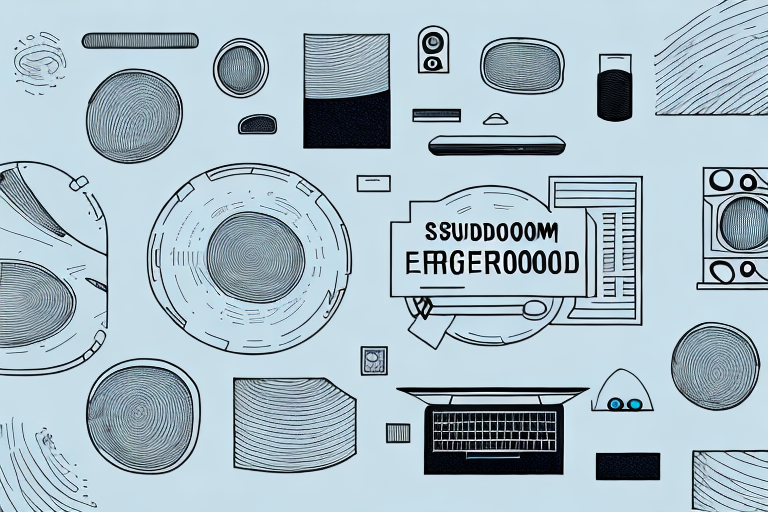Welcome to our comprehensive guide on soundproofing concrete floors. In this article, we will explore the importance of soundproofing, the benefits it offers, common noise problems associated with concrete floors, and various techniques to effectively soundproof your space. Whether you want to create a peaceful environment in your home, office, or any other space, this article will provide you with all the information you need to make informed decisions.
Understanding the Importance of Soundproofing
Soundproofing a concrete floor is essential for several reasons. First and foremost, it helps to reduce unwanted noise transmission between different areas of a building. Whether you’re looking to minimize disturbances from foot traffic, conversations, or equipment operation, soundproofing can significantly improve the overall comfort and privacy of your space.
Furthermore, soundproofing is crucial in commercial settings such as offices, recording studios, and entertainment venues, where noise control is crucial for optimum productivity and customer satisfaction. By effectively soundproofing your concrete floors, you can create a more enjoyable and functional environment for everyone.
In addition to reducing noise transmission and improving comfort, soundproofing concrete floors also offers other benefits. One of these benefits is energy efficiency. Soundproofing materials, such as acoustic underlayments, can help to insulate the floor and reduce heat loss, resulting in lower energy consumption and cost savings.
The Benefits of Soundproofing a Concrete Floor
The benefits of soundproofing a concrete floor are numerous. Firstly, it helps to create a peaceful and quiet environment by significantly reducing airborne and impact noise. This allows for better concentration, relaxation, and sleep quality, especially in spaces where sound insulation is of utmost importance.
Moreover, soundproofing your concrete floors can also enhance the overall energy efficiency of your space. The soundproofing materials and techniques used can act as thermal insulation, effectively reducing heat loss or gain through the floors. This can lead to lower energy bills and increased comfort in both hot summers and cold winters.
Lastly, soundproofing can add value to your property. Whether you plan to sell or rent your space, the presence of soundproofing measures in a concrete floor can be seen as a desirable feature, attracting potential buyers or renters who prioritize peace and quiet.
In addition to these benefits, soundproofing a concrete floor can also provide improved privacy. By reducing the transmission of sound, it helps to prevent conversations and activities from being overheard by others. This is particularly beneficial in shared living spaces, such as apartments or office buildings, where privacy is important for maintaining a comfortable and professional environment.
Common Noise Problems in Concrete Floors
Concrete floors are notorious for transmitting noise, which can lead to various noise problems. Common noise issues include airborne noise, such as voices or music, and impact noise caused by footsteps or dropped objects. These noises can travel through the building structure, causing disturbances in adjacent rooms or floors.
In addition, concrete floors can also amplify vibrations and resonate with low-frequency sounds, creating a reverberant effect that further enhances the noise levels in a space. This can be particularly problematic in settings where sound quality and clarity are critical, such as recording studios or home theaters.
Another common noise problem in concrete floors is the transmission of mechanical noise. This can occur when machinery or equipment is placed directly on the floor, causing vibrations that are then transmitted through the concrete. This can be a significant issue in industrial or manufacturing settings, where heavy machinery is often used.
Furthermore, the lack of sound insulation in concrete floors can also contribute to noise problems. Unlike other types of flooring materials, such as carpet or wood, concrete does not provide much in terms of sound absorption. This means that sound waves are more likely to bounce off the hard surface, leading to increased noise levels in the surrounding areas.
Assessing the Soundproofing Needs of Your Space
Before embarking on any soundproofing project, it’s essential to assess the specific soundproofing needs of your space. Factors to consider include the purpose of the space, the level of noise you want to reduce, and any local building codes or regulations pertaining to sound insulation.
An acoustical consultant can be a valuable resource in conducting a thorough assessment through various sound measurements and analyses. This will help determine the appropriate soundproofing materials, techniques, and strategies for your concrete floor, tailored to your specific requirements and budget.
It’s important to note that soundproofing needs can vary depending on the type of space. For example, a recording studio may require a higher level of soundproofing compared to a home office. Additionally, the location of the space can also impact the soundproofing requirements. Spaces located near busy streets or airports may require more robust soundproofing solutions.
Choosing the Right Soundproofing Materials for Concrete Floors
When it comes to soundproofing a concrete floor, selecting the right materials is crucial for achieving optimal results. Common soundproofing materials include mass loaded vinyl (MLV), acoustic underlayment, insulation, and specialized sealants and caulk for effective sound isolation.
Mass loaded vinyl is a popular choice as it provides excellent sound absorption and acts as a sound barrier. Acoustic underlayment, such as cork or rubber, can help reduce impact noise and vibrations. Insulation materials, such as mineral wool or fiberglass, are commonly used to minimize airborne sound transmission.
Sealants and caulks play a crucial role in sealing gaps and cracks in the concrete floor, preventing sound leakage. Additionally, specialized soundproofing mats and panels can be used for targeted noise control in specific areas.
When choosing soundproofing materials for concrete floors, it is important to consider the specific needs of your space. For example, if you are soundproofing a home theater room, you may want to prioritize materials that provide maximum sound absorption to create a truly immersive experience. On the other hand, if you are soundproofing a commercial space, you may need materials that can withstand heavy foot traffic and provide long-lasting durability.
In addition to selecting the right materials, proper installation is key to achieving effective soundproofing. It is important to follow manufacturer guidelines and ensure that all materials are properly sealed and secured. Hiring a professional soundproofing contractor can help ensure that the installation is done correctly and that you achieve the desired results.
Exploring Different Soundproofing Techniques for Concrete Floors
There are several soundproofing techniques that can be employed to effectively reduce noise transmission through concrete floors. One technique is the installation of resilient channels, which are metal strips that are attached to the floor joists to decouple the ceiling from the floor, minimizing direct sound transmission.
Another technique is the use of floating floor systems, where a layer of sound-dampening material is placed between the concrete floor and the finish floor. This helps absorb impact noise and vibrations, preventing them from traveling to adjacent areas.
Additionally, incorporating carpet or rugs can significantly enhance sound absorption on concrete floors, reducing both airborne and impact noise. Acoustic panels and diffusers are also effective in controlling noise reflections and reverberations, improving overall sound quality in a space.
One more technique for soundproofing concrete floors is the application of soundproof underlayment. This is a specialized material that is installed between the concrete floor and the finish floor to further reduce noise transmission. Soundproof underlayment is typically made of materials such as rubber or cork, which have excellent sound-dampening properties. It helps to absorb impact noise and vibrations, providing an additional layer of sound insulation for the space.
Step-by-Step Guide to Soundproofing a Concrete Floor
Now, let’s take a closer look at the step-by-step process to soundproof a concrete floor. Please note that the specific steps may vary depending on the chosen materials and techniques, but this outlines a general approach to get you started.
Step 1: Prepare the Concrete Surface – Ensure the concrete floor is clean and free from any debris or loose particles. Any cracks or gaps should be properly filled and sealed.
Step 2: Install Acoustic Underlayment – Lay down a suitable acoustic underlayment, such as cork or rubber, over the entire concrete floor surface. This will help reduce impact noise and vibrations.
Step 3: Use Mass Loaded Vinyl (MLV) – Install mass loaded vinyl by adhering it to the underlayment or directly to the concrete floor. This will act as an effective sound barrier, blocking airborne noise.
Step 4: Consider Insulation – If further soundproofing is desired, apply insulation materials over the underlayment or between floor joists to reduce airborne sound transmission.
Step 5: Seal and Caulk – Finally, seal all gaps, cracks, and joints using specialized soundproofing sealants and caulk to minimize sound leakage and maximize sound isolation.
Step 6: Install Floating Floor – For additional soundproofing, consider installing a floating floor on top of the acoustic underlayment. A floating floor consists of interlocking panels that are not directly attached to the concrete, creating an extra layer of insulation against sound transmission.
Step 7: Use Soundproofing Rugs or Carpets – To further reduce impact noise and improve sound absorption, place soundproofing rugs or carpets on top of the floating floor. These materials can help dampen footsteps and other noises that may travel through the floor.
Addressing Impact Noise with Floating Floor Systems
Impact noise, such as footsteps or dropped objects, can be particularly bothersome in concrete floors. One effective method to address this issue is by installing a floating floor system. This involves placing a layer of sound-dampening material, such as cork or rubber, between the concrete floor and the finish floor, creating a decoupled layer that absorbs impact noise and prevents it from traveling to adjacent areas.
Floating floor systems are commonly used in residential and commercial settings where impact noise reduction is critical, such as apartments, condominiums, or offices with high foot traffic. They provide an effective solution for minimizing sound disturbances and ensuring a peaceful environment.
One advantage of floating floor systems is their versatility. They can be installed over various types of subfloors, including concrete, wood, or even existing flooring. This makes them a flexible option for both new construction projects and renovations, as they can be easily adapted to different environments.
In addition to reducing impact noise, floating floor systems also offer other benefits. They can improve thermal insulation, helping to keep the space warmer in colder months and reducing energy consumption. Furthermore, they can provide added comfort underfoot, as the cushioning effect of the sound-dampening material can make walking or standing on the floor more comfortable.
The Role of Carpet and Rugs in Sound Absorption on Concrete Floors
Carpet and rugs play a significant role in sound absorption on concrete floors. They act as natural sound absorbers, reducing both airborne and impact noise. The soft fibers of carpets and rugs trap sound waves, preventing them from bouncing off hard surfaces and causing echoes or reverberations.
When choosing carpets or rugs for soundproofing purposes, consider options with dense pile and thicker padding, as these provide better sound absorption. Additionally, using carpet tiles or area rugs strategically placed in high-traffic areas can further enhance the overall soundproofing performance of your concrete floor.
Furthermore, carpet and rugs can also contribute to improving indoor air quality. They act as filters, trapping dust, allergens, and other particles that would otherwise circulate in the air. Regular vacuuming and professional cleaning can help maintain the cleanliness of carpets and rugs, ensuring a healthier living environment.
Incorporating Acoustic Panels and Diffusers for Noise Control
Acoustic panels and diffusers are effective tools for controlling noise reflections and reverberations in spaces with concrete floors. These products are specifically designed to absorb or scatter sound waves, improving overall sound quality and reducing unwanted echoes or resonances.
Acoustic panels are typically made of sound-absorbing materials, such as fabric-wrapped fiberglass or perforated wood panels, and can be installed on walls, ceilings, or even directly on the concrete floor for enhanced sound control. Diffusers, on the other hand, scatter sound waves in multiple directions, breaking up reflections and creating a more balanced acoustic environment.
By incorporating these elements strategically in your space, you can achieve a more controlled and enjoyable sound environment on your concrete floor.
When selecting acoustic panels and diffusers, it is important to consider the specific needs of your space. The size, shape, and materials used in the construction of the panels and diffusers can greatly impact their effectiveness. Additionally, the placement of these elements within the room can also play a significant role in achieving optimal sound control.
Maximizing the Effectiveness of Soundproofing Measures on Concrete Floors
To maximize the effectiveness of soundproofing measures on concrete floors, it’s essential to consider a comprehensive approach that combines multiple techniques and materials. The combination of sound-absorbing, sound-blocking, and sound-damping solutions can significantly enhance overall noise reduction.
In addition, paying attention to detail during the installation process is crucial. Ensure proper sealing of gaps and joints, use high-quality materials, and follow manufacturer guidelines for optimal performance. Consulting with professionals in the field can provide valuable insights and expert advice tailored to your specific needs.
Furthermore, regular maintenance and inspection of the soundproofing measures are necessary to ensure their long-term effectiveness. Over time, wear and tear, as well as changes in environmental conditions, can affect the performance of the soundproofing materials. By conducting routine checks and addressing any issues promptly, you can maintain the desired level of noise reduction in your space.
Common Mistakes to Avoid When Soundproofing a Concrete Floor
While soundproofing a concrete floor can be a straightforward process, there are common mistakes that should be avoided to ensure optimal results:
1. Neglecting proper planning and assessment of soundproofing needs. Understanding the specific requirements of your space is essential for selecting the right materials and techniques.
2. Choosing low-quality soundproofing materials. Investing in high-quality products is critical for achieving long-lasting and effective soundproofing performance.
3. Ignoring proper installation techniques. Ensure that soundproofing materials are installed correctly, following manufacturer guidelines and best practices.
4. Overlooking sealing and caulk. Properly sealing gaps and joints is crucial for minimizing sound leakage and maximizing sound insulation.
5. Neglecting maintenance. Regular maintenance, such as cleaning carpets and rugs or inspecting sealants, is necessary to ensure ongoing soundproofing effectiveness.
Maintenance Tips for Long-Term Soundproofing Performance
To maintain long-term soundproofing performance on your concrete floor, consider the following maintenance tips:
1. Regularly clean carpets and rugs to prevent the accumulation of dust and debris that can impact sound absorption.
2. Inspect and replace damaged or worn-out soundproofing materials, such as acoustic underlayment or seals, to maintain their effectiveness.
3. Check for any gaps or cracks in the concrete floor and reapply sealants or caulks as needed to prevent sound leakage.
4. Conduct periodic sound measurements to assess any changes in sound transmission and address potential issues promptly.
By following these maintenance tips, you can ensure that your soundproofing measures continue to deliver optimal noise reduction performance, keeping your space peaceful and comfortable for years to come.
In Conclusion
Soundproofing a concrete floor is a worthwhile investment for anyone looking to create a peaceful and quiet environment. By understanding the importance of soundproofing, assessing the specific needs of your space, and choosing the right materials and techniques, you can significantly reduce noise transmission and enhance comfort and productivity.
Whether you’re dealing with airborne noise, impact noise, or both, the combination of sound-absorbing, sound-blocking, and sound-damping strategies can help you achieve the desired level of soundproofing on your concrete floor. Remember to avoid common mistakes and perform regular maintenance to ensure long-term effectiveness.
By implementing the information provided in this article, you can take the necessary steps to soundproof your concrete floors and create a more enjoyable and peaceful environment in your home or workplace.



